Endangered Species Day
May 15 is Endangered Species Day. Why is th is an important topic? Healthy ecosystems depend on plant and animal species as their foundations. When a species becomes endangered, it is a sign that the ecosystem is slowly falling apart. Each species that is lost may trigger the loss of other species within its ecosystem. True conservation has to be a lifestyle, not just a reaction, and raising kids to understand why nature matters is the best way to instill the appreciation that leads to responsible habits. Knowing how it happens and how to prevent it is our responsibility, which is why we have created activities that all have an Endangered Species theme. These activities include things that will help your child develop fine and gross motor skills, problem-solving and engineering skills, and can help them engage in cooperative play, while fostering creativity and perseverance. Each theme also comes with recommended literature and movie connections. Feel free to throw in your own activities that might relate, and don’t forget to post your results to social media and tag @discoverymuse to share with everyone else!
is an important topic? Healthy ecosystems depend on plant and animal species as their foundations. When a species becomes endangered, it is a sign that the ecosystem is slowly falling apart. Each species that is lost may trigger the loss of other species within its ecosystem. True conservation has to be a lifestyle, not just a reaction, and raising kids to understand why nature matters is the best way to instill the appreciation that leads to responsible habits. Knowing how it happens and how to prevent it is our responsibility, which is why we have created activities that all have an Endangered Species theme. These activities include things that will help your child develop fine and gross motor skills, problem-solving and engineering skills, and can help them engage in cooperative play, while fostering creativity and perseverance. Each theme also comes with recommended literature and movie connections. Feel free to throw in your own activities that might relate, and don’t forget to post your results to social media and tag @discoverymuse to share with everyone else!
Art Activity/Fine Motor Activity
For this activity, you’ll need to collect some paper, coloring materials, glue/tape, and any additional arts and crafts supplies (like googly eyes, pompoms, yarn, twine, etc).
Directions
- Choose an endangered species from the list here.
- Cut out pieces of paper to be the body and head of the animal.
- Cut out holes for your fingers to go through to be its legs. Try to size them for your index and middle fingers.
- Use tape/glue to secure the head and body.
- Add any additions to enhance your animal (fins, hair, fur, feathers, wings, spots, etc)
- Create other endangered animals and soon you’ll have a whole animal village!
- While you’re working, talk about what each animal eats, where it lives, why it’s endangered, and what’s being done to protect it.
Science Activity – A Food Web Pizza Party!
May 15 is Endangered Species Day, but it’s also Pizza Party Day! We came up with a fun way to celebrate both!
But first! You must know a thing or two about Food Chains and Food Webs.
A Food Chain shows a food relationship (and how the energy flows) among plants and animals in a specific area or environment. A change in one part of a food chain might affect the rest of the food chain.
A Food Web shows the interconnected and overlapping food chains in an ecosystem.
Food Chains and Webs always start with the sun. Plants get energy from the sun. Plants get eaten by an animal and the energy goes to the animal. That animal gets eaten by another animal, and the energy goes to the next animal. And so on.
In our pizza, the dough is made from wheat – which is a plant. The tomato sauce also comes from a plant – tomatoes and herbs. The plants get their energy from the sun. I will also add onions and peppers to my pizza, which are plants, also. Plants are considered Producers in the food chain.
The next thing we add to the pizza is cheese. Cheese comes from milk from cows. Cows are herbivores who eat grass to get energy. Anything that eats anything else is called a consumer.
I am also adding pepperoni, which comes from pigs. Pigs are omnivores, which means they eat meat and vegetables. Pigs and cows are consumers.
Finally, I am going to sprinkle some mushrooms onto the pizza. Mushrooms are fungi and considered decomposers – they break down things and turn them into soil and nutrients for growing things.
Now imagine that one of the things in the food chain became endangered. What happens to the other animals in the chain?
Animals can become endangered for a variety of reasons. Below are the major causes:
- Habitat destruction.
- Global warming
- Overfishing and hunting
- Poisoning from pesticides and pollution
- Introduced species (the spread of non-native species)
When a species becomes endangered, it impacts the whole food web, even if they’re at the very top. If a producer (plant) is wiped out, the animals that eat it may die, also. Or they will need to find a new plant to eat – which might cause that new plant to be overeaten! If a consumer is lost, there may be an overabundance of whatever it used to eat – imagine the planet being taken over by bunnies! All the parts of the food chain/web are important and play important roles in the lives of others.
Physical Activity – Endangered Species Musical Chairs
Get some of those wiggles out while learning a little about the effects that can cause animal extinction. This will be a variation of musical chairs that can lead to conversations about how to to help/prevent endangered species.
- You will need to gather chairs (one less than players – get everyone involved!) and a device on which to play music.
- Explain that all players are now an endangered species (they can choose which animals to be) and the chairs are their homes. Each round something will happen that will cause a little of their home to be removed from play.
- Each round, play music while participants circle chairs (or run about, do jumping jacks, hop around on one foot with their tongue out…). Before the music stops, announce that something has happened to endanger their home such as:
- Habitat Destruction (your treehouse was cut down to make paper bags)
- Global Warming (can’t float on the ice that’s not there)
- Overfishing/Overhunting (your herd was killed off, need to find a new family!)
- Poison/Pollution (pesticides and garbage make it hard to live in an area long)
- Invasive Species (new animal in the neighborhood eats all your food!)
- As participants eventually get out of the game, have them thinking of ways that chairs can be added back to the game.
- Reforestation (plant trees to recreate habitats that were destroyed)
- Cutting down on pollution (walking/biking to places instead of using cars)
- Sustainable Fishing (purchase fish raised on fish farms or avoid unusual fish)
- Using Natural Pesticides (vinegar kills weeds and doesn’t hurt bees)
- Careful Screening for “Exotic Species” (preventing them from entering new environments)
- If participants can keep ahead of the removal, they’re doing a great job! But if not (or if you manage to start taking two chairs away at a time!) then eventually you’ll end up with only one chair and one participant left.
- Keep in mind that even the winner loses – when there’s only one left, their species can’t reproduce.
- This is a great time for discussion – what can we do to help prevent animals from becoming endangered, and what can we be done to help those in danger now.
Conversation Starters and Research Questions
- How can you help prevent the causes of Endangered Species?
- What can you do to help animals on the Endangered Species List?
- Special laws have been created to help protect Endangered Species and prevent them from becoming extinct. What animals are already extinct?
- Have you or your family ever seen any endangered animals before?
- Some Endangered Species are protected in Wildlife Sanctuaries, Refuges, or Preserves around the world. Check some of them out!
Videos and Websites
- Animal Trivia World Wildlife website
- Endangered Species List World Wildlife website
- Endangered Species Coalition Endangered Species Day activities website
- #Startwith1thing website
- 10 Easy Things You Can Do to Save Endangered Species website
- 13 Animals that Depend on Wildnerness Refuges website
- Endangered Animals SciShow video
- How to Protect Endangered Animal Species Wild Kratts video
- Endangered and Extinct Animals video
- Why Do Animals Go Extinct Colossal Questions video
- 7 Species That Were Saved from Extinction video
Movie/Literature Connection:
Because we know you’re stuck at home with limited access to movies and books, we tried to compile a list that connects to today’s theme that you might already have in your collection or be able to access online. These include:
Movies:
- Racing Extinction
- The Lorax
- Hoot
- Fern Gully
- The Rescuers and The Rescuers Down Under
- Happy Feet
- Rio
- Ice Age: The Meltdown
- The Amazing Panda Adventure
Books:
- Endangered Animals by Faith McNulty
- Will We Miss Them: Endangered Species by Alexandra Wright
- Almost Gone: The World’s Rarest Animals by Steve Jenkins
- Through Endangered Eyes by
- Don’t Let Them Disappear by Chelsea Clinton
- Can We Save Them? Endangered Species of North America by David Dobson
- If Sharks Disappeared by Lily Williams
[/vc_column_text][/vc_column][/vc_row]


